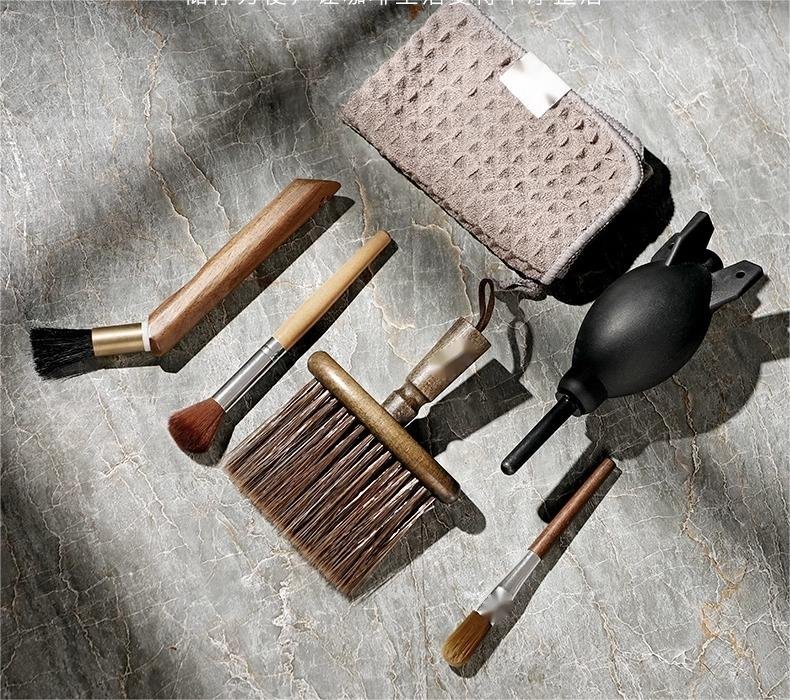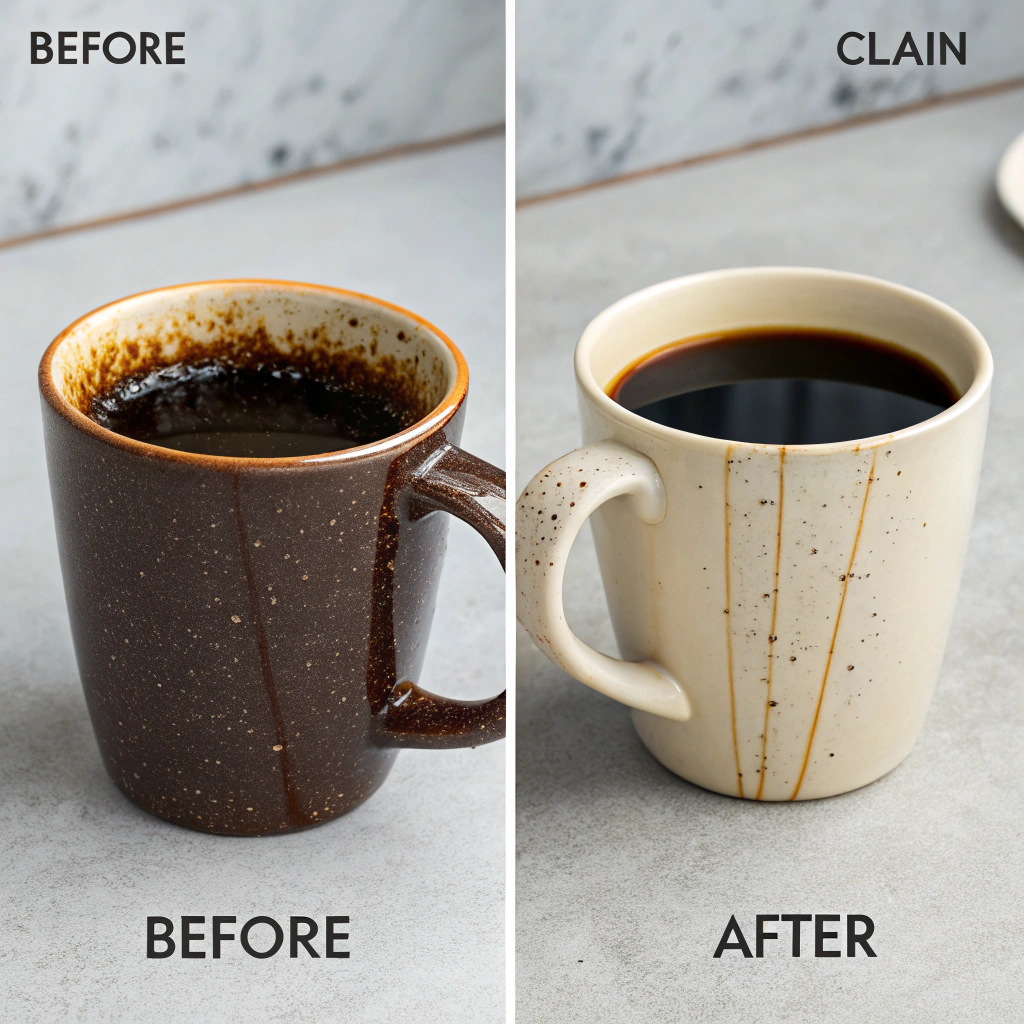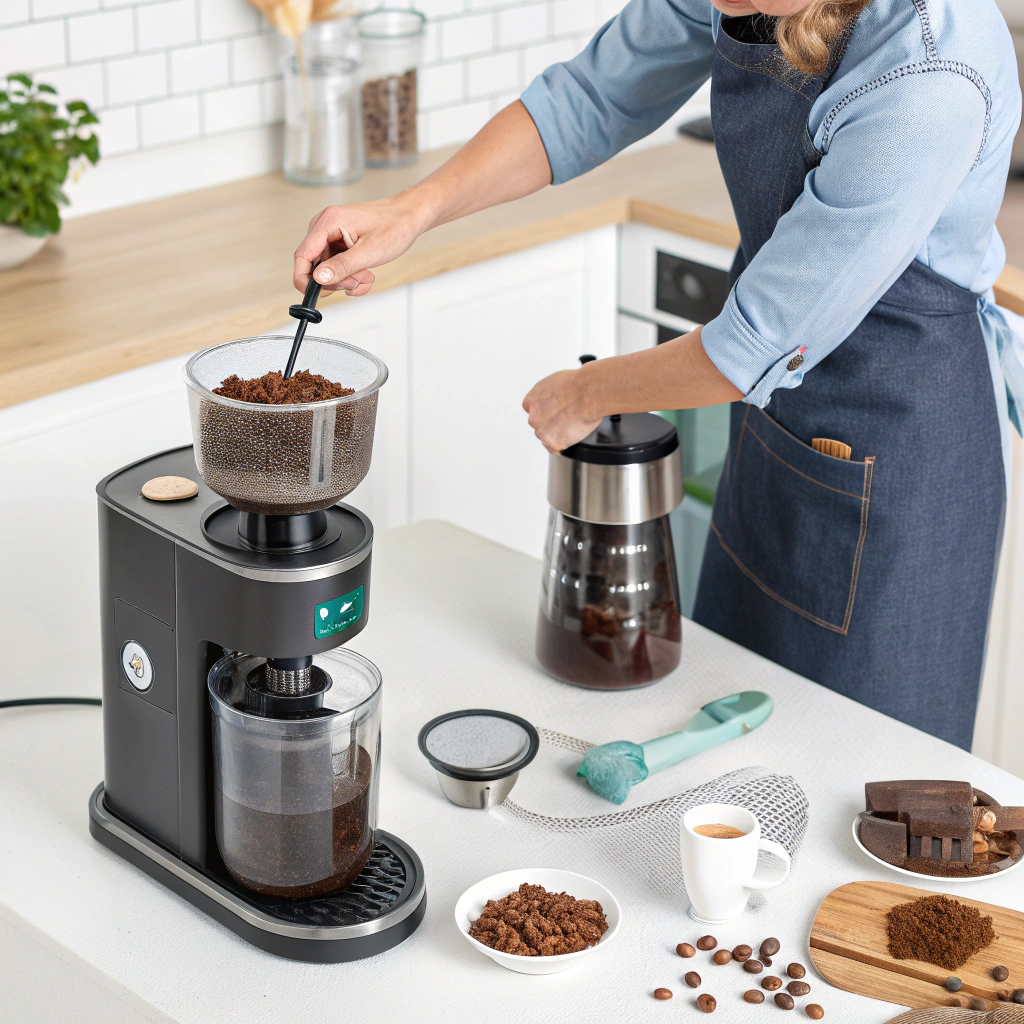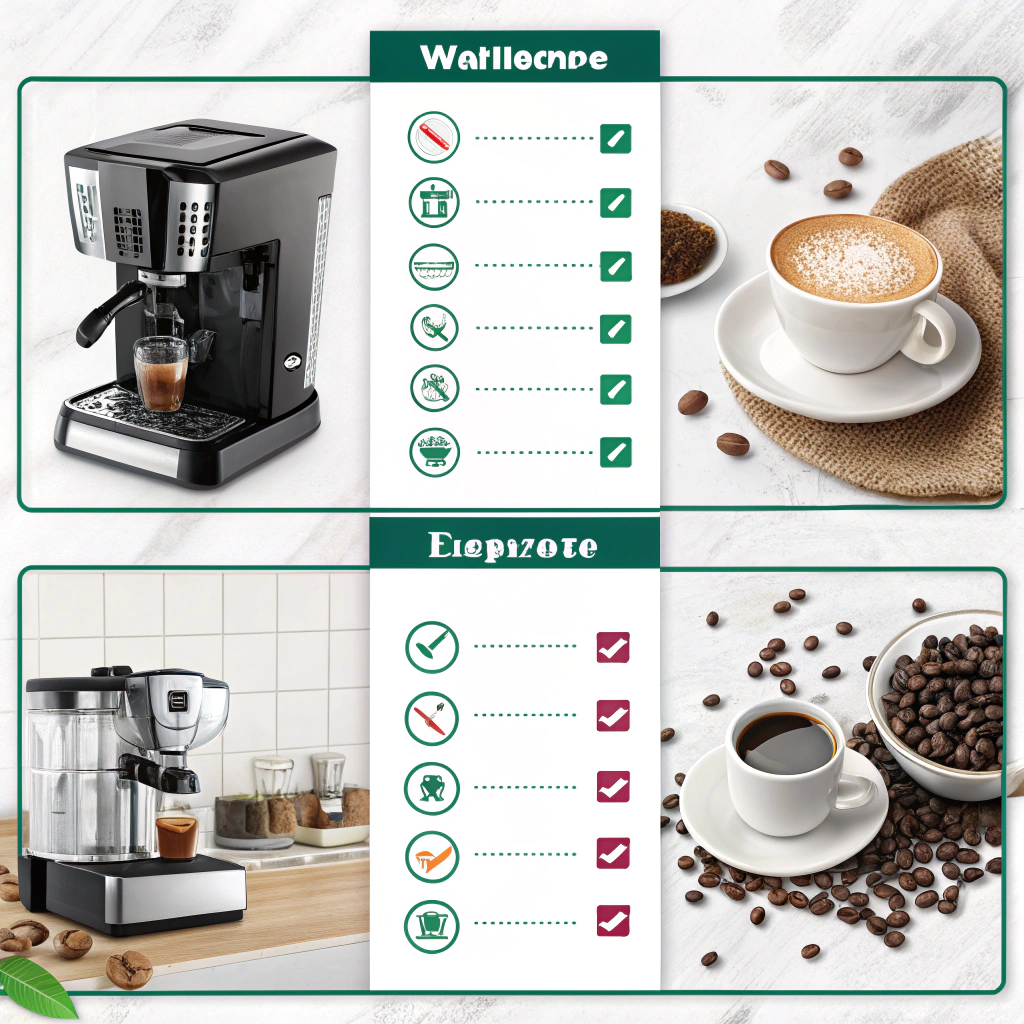Coffee equipment that's not properly cleaned can ruin your morning brew with bitter, rancid flavors. I've seen countless coffee enthusiasts invest in premium beans and equipment only to wonder why their coffee still tastes off. The right cleaning kit makes all the difference.
Before purchasing a coffee cleaning kit, consider: the type of cleaner needed for your specific equipment, components included in the kit, effectiveness against coffee residues, ease of use, and compatibility with your machine. These factors ensure you'll get a kit that maintains your equipment's performance and your coffee's quality.

I've spent years testing various coffee cleaning products, and I've learned that not all kits are created equal. Let me walk you through the essential considerations that will save you from wasting money on ineffective cleaning solutions and help you maintain your coffee equipment properly.
Which Type of Cleaner Does Your Equipment Actually Need?
Using the wrong cleaner on your coffee equipment can damage components or leave harmful residues. I've seen customers accidentally use espresso machine cleaners on grinders, causing unnecessary repairs and replacements.
Different coffee equipment requires specific cleaning products: espresso machines need backflushing detergents and descalers, while grinders require specialized grinder cleaners. Determine whether you need cleaners for your espresso machine, coffee grinder, or both before purchasing a kit.

The coffee equipment cleaning landscape can be confusing with so many specialized products available. Let me break this down based on equipment type:
Espresso Machine Cleaning Needs
- Group head cleaners: These remove coffee oils and residue from the brew group and portafilter
- Descaling solutions: These eliminate mineral buildup in water lines and boilers
- Milk system cleaners: Essential for machines with steam wands or automatic milk frothers
Grinder Cleaning Requirements
- Grinder tablets: These absorb oils and clean burrs without disassembly
- Brushes: For removing ground coffee from chutes and dosing chambers
- Compressed air: For cleaning hard-to-reach areas without moisture
When I first started in the coffee industry, I made the mistake of using a generic "coffee machine cleaner" on everything. This resulted in clogged grinder burrs and residual chemical taste in my espresso. Investing in equipment-specific cleaners not only extends the life of your machines but also ensures the purity of your coffee's flavor. Always check manufacturer recommendations for your specific model before purchasing cleaning supplies.
What Essential Components Should Your Cleaning Kit Include?
An incomplete cleaning kit means you'll still have dirty components affecting your coffee quality. I've experienced the frustration of purchasing a kit only to discover it lacked critical tools for maintaining my machine properly.
A comprehensive coffee cleaning kit should include cleaning tablets, group head brushes, microfiber cloths, descaling solution, milk system cleaners, and small cleaning tools for nooks and crannies. This ensures you can maintain all parts of your coffee equipment.

When evaluating coffee cleaning kits, thoroughness is key. A truly effective kit addresses every component that affects coffee quality and machine performance. Here's what I look for in a complete cleaning system:
Essential Components of a Comprehensive Cleaning Kit
| Component | Purpose | Frequency of Use |
|---|---|---|
| Backflush detergent | Removes coffee oils from group heads and valves | Daily to weekly |
| Descaling solution | Eliminates mineral buildup in water pathways | Monthly to quarterly |
| Group head brush | Cleans shower screen and group gasket | Daily |
| Portafilter brush | Removes grounds from basket and spouts | After each use |
| Microfiber cloths | Wipes external surfaces without scratching | Daily |
| Grinder cleaning pellets | Absorbs oils from burrs and grinding path | Weekly to monthly |
| Milk system cleaner | Dissolves milk protein residue | Daily for commercial use |
| Precision cleaning tools | Cleans small openings and channels | As needed |
| Water hardness test strips | Determines descaling frequency | Before establishing cleaning routine |
I once purchased what seemed like a comprehensive kit, only to discover it lacked proper descaling solution. Three months later, my machine's performance declined significantly due to scale buildup. This taught me that overlooking even one component can compromise your entire coffee system. When comparing kits, I now create a checklist of everything my specific equipment needs and ensure the kit addresses all these requirements. Some manufacturers offer machine-specific kits that are ideally formulated for their equipment, which can be worth the premium price for proper maintenance.
How Effective Is the Cleaner Against Different Coffee Residues?
Some cleaners remove grounds but leave behind oils that taint future brews. I've tasted the difference between coffee from a thoroughly cleaned machine versus one with residual buildup—the difference is immediately noticeable.
Effective coffee cleaners must combat three primary residues: coffee oils that turn rancid, fine coffee grounds that clog pathways, and milk proteins that harbor bacteria. Choose cleaners specifically formulated to dissolve these substances completely.

The effectiveness of coffee cleaning products varies dramatically, and understanding the science behind different residues helps in selecting the right solutions. In my experience managing a busy café, I learned that residues require different approaches:
Types of Coffee Residues and Their Removal Challenges
Coffee Oils and Lipids
Coffee beans contain 15-20% oils that become more concentrated as they adhere to equipment surfaces. These oils turn rancid within days, creating bitter, unpleasant flavors. Effective cleaners must:
- Contain emulsifiers that break down lipids
- Work at the temperature of your equipment
- Rinse completely without leaving their own residue
Ground Coffee Particles
Even microscopic coffee grounds can:
- Clog precision water pathways
- Provide a breeding ground for mold
- Create back pressure in brewing systems
- Contaminate fresh grounds in grinders
Milk Proteins and Sugars
Perhaps the most challenging residue, milk creates:
- Protein films that harbor bacteria
- Calcium deposits that affect steam pressure
- Sugar caramelization that's difficult to remove
I learned this lesson the hard way when switching cleaning products to save money. While the machine appeared clean visually, within a week customers began complaining about bitter espresso. Testing revealed that our new cleaner wasn't effectively dissolving coffee oils. The best cleaning solutions typically contain surfactants for oils, chelating agents for mineral deposits, and enzymes for protein breakdown. When evaluating cleaners, I recommend checking the specific residues they target rather than accepting general "coffee machine cleaner" claims.
Is the Cleaning Kit User-Friendly for Regular Maintenance?
Complex cleaning procedures often get postponed or abandoned entirely. I've witnessed cafés with expensive machines deteriorate because their cleaning systems were too complicated for staff to implement consistently.
User-friendly cleaning kits feature clear instructions, minimal equipment disassembly, and quick procedures that encourage regular use. Look for solutions like drop-in tablets, programmable cleaning cycles, and tools designed for efficiency.

The most effective cleaning system is one that actually gets used regularly. Throughout my career in the coffee industry, I've observed that ease of use directly correlates with cleaning compliance. Here's what makes a cleaning kit truly user-friendly:
Key Factors in Cleaning Kit Usability
Time Efficiency
Time is valuable, especially in busy commercial settings or hectic mornings at home. The most user-friendly kits:
- Require minimal active time (drop-in solutions that work while you do other tasks)
- Have clear timing guidelines (knowing exactly how long each cleaning process takes)
- Offer quick-clean options for daily maintenance and deeper cleaning protocols for weekly/monthly maintenance
Clear Instructions
I've seen too many cleaning products with vague directions leading to improper use. The best kits include:
- Visual guides with photographs or illustrations
- Step-by-step instructions with specific measurements
- Troubleshooting tips for common issues
- QR codes linking to video demonstrations
Minimized Disassembly
Systems requiring extensive disassembly create barriers to regular cleaning. Ideal cleaning solutions:
- Clean internal components without complete disassembly (like grinder tablets that clean burrs without removal)
- Use backflushing systems that clean internal valves and pathways
- Include tools specifically designed to reach difficult areas without disassembly
I remember implementing a new cleaning system at my previous café that reduced cleaning time by 65% while improving thoroughness. Staff compliance jumped from sporadic to nearly 100% because the system was intuitive and efficient. When evaluating a potential cleaning kit, I recommend timing the entire cleaning process during your consideration. If it seems cumbersome or confusing, you'll likely find yourself postponing regular maintenance, ultimately affecting your coffee quality.
Will the Cleaning Kit Work With Your Specific Coffee Equipment?
Using incompatible cleaning products can void warranties or damage sensitive components. I've consulted with customers who unknowingly used generic cleaners that corroded their machine's internal parts, resulting in costly repairs.
Verify that your cleaning kit is compatible with your specific coffee machine model and material composition. Superautomatic machines, traditional espresso machines, and pod-based systems like Keurig or Nespresso all require different cleaning approaches and chemicals.

Compatibility is perhaps the most overlooked aspect of coffee cleaning systems, yet it can have the most serious consequences. Through my work with different coffee equipment manufacturers, I've learned that compatibility encompasses several important dimensions:
Equipment Compatibility Considerations
Machine Type Variations
Different coffee systems have unique cleaning requirements:
| Machine Type | Special Considerations | Cleaning Precautions |
|---|---|---|
| Superautomatic | Internal brewing units, milk systems, and grinders all in one | Often require manufacturer-specific cleaning tablets; generic cleaners may damage plastic components |
| Traditional Espresso | Metal group heads, portafilters, steam wands | Can typically handle stronger cleaning chemicals but may have specific backflushing requirements |
| Pod-based Systems | Needle piercers, small water pathways | Often have dedicated cleaning pods; regular descalers may be too aggressive |
| Drip Coffee Makers | Wide water distribution systems, plastic components | Need gentle descalers; some cleaners may leave residual tastes |
| Manual Brewers | Various materials (glass, ceramic, metal, plastic) | Material-specific cleaning requirements to prevent damage |
Material Compatibility
Coffee equipment contains various materials that react differently to cleaning chemicals:
- Aluminum components can be damaged by alkaline cleaners
- Rubber gaskets and seals may deteriorate with certain solvents
- Plastic parts can become brittle or discolored with aggressive cleaners
- Brass or copper boilers require specific descaling approaches
Warranty Considerations
Many manufacturers specify acceptable cleaning products in their warranty terms. Using non-approved cleaners can void your warranty, leaving you unprotected for potentially expensive repairs.
I learned this lesson when helping a client troubleshoot their relatively new superautomatic machine. They had been using a generic cleaner marketed for "all coffee machines," but this particular cleaner contained citric acid at a concentration too high for their machine's plastic brewing unit. The result was microscopic cracks that caused persistent leaking. Always check your machine's manual or contact the manufacturer directly to verify cleaning compatibility before purchasing a kit.
Conclusion
Choosing the right coffee cleaning kit means matching it to your specific equipment, ensuring it tackles all residues effectively, and finding solutions that are easy to use consistently. This careful selection will extend your machine's life, maintain optimal performance, and most importantly, preserve the pure flavor of your coffee.




